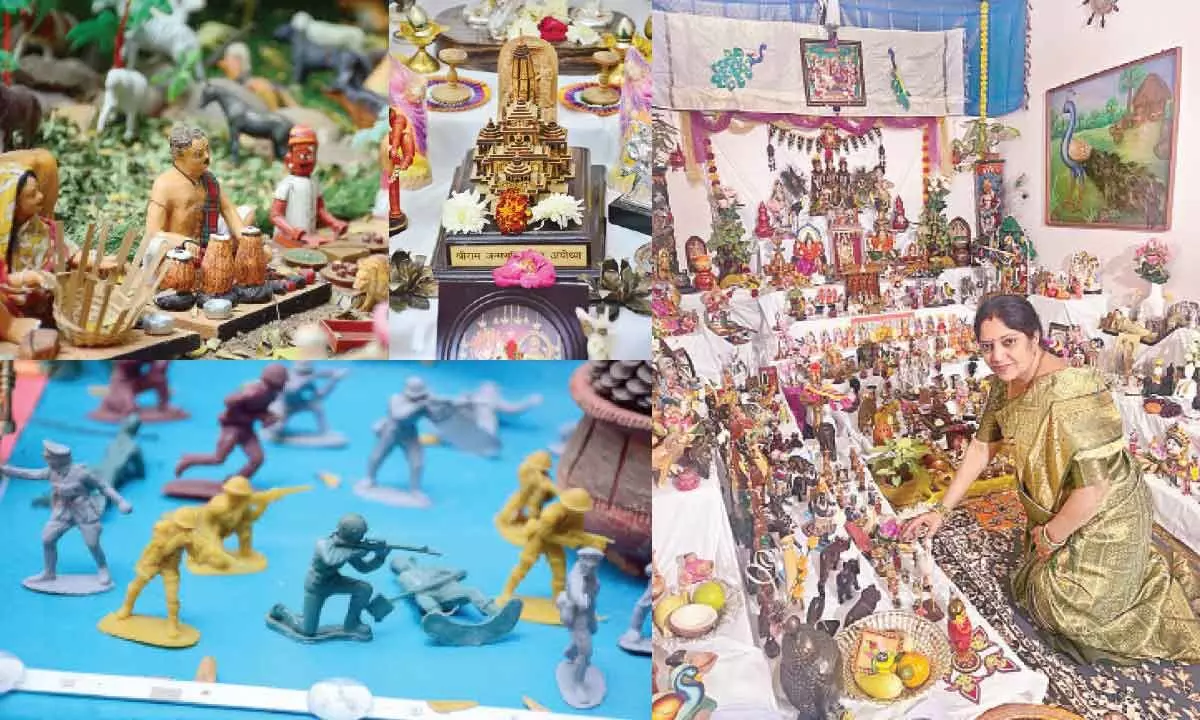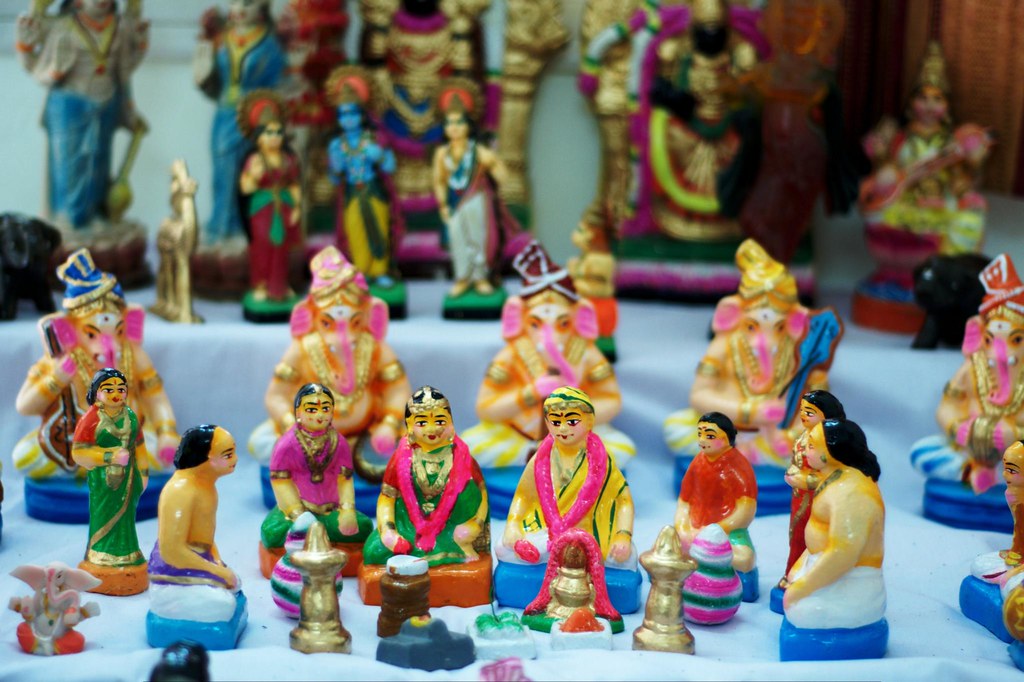Bommalakoluvu is a traditional and artistic presentation of dolls
Festivals play a crucial role in human culture, serving as mirrors that reflect the values, beliefs, and traditions unique to various communities.

Despite their deep-rooted significance, festivals are not rigid; instead, they are dynamic and responsive to evolving times and circumstances.
Over the recent decades, transformations in urban living, mindset, and technological progress have ushered in a change in the way festivals are celebrated, diverging from traditional practices observed in the past.
For instance, during Sankranti, the ‘Bommala Koluvu’ tradition used to be a common practice among residents, but it has slowly faded.

Bommalakoluvu arrangement of dolls
Bommalakoluvu is a traditional and artistic presentation of dolls, primarily undertaken by women in Hindu households and temples, particularly during the Navratri festival and sankranti.

The dolls are creatively arranged on a set of odd-numbered steps or planks, illustrating diverse themes such as Hindu mythology, court life, everyday scenes, and miniature kitchen utensils.
ALSO, READ / Rituals at Ayodhya Ram Mandir – 7 Day Schedule Details…
Referred to by different names such as Golu, Gombe Habba, or Bommai Golu in various languages, this tradition is a celebration of the feminine power embodied by goddesses Saraswati, Parvati, and Lakshmi, reflecting the rich culture and heritage of India.
Bommalakoluvu stands as a beautiful and unique tradition, faithfully preserved by many families across generations.
However, B Padmavathi from the city has taken it upon herself to maintain this tradition. She keeps the spirit alive by showcasing an impressive collection of around 3,000 unique dolls and idols during the festival, ensuring that the cultural richness of the celebration endures despite the changing times.

Residing in Anand Nagar Colony, Khairatabad, this homemaker has shared a fascinating family tradition.
While most people traditionally display toys during festivals like Deepavali or Dasara, her household has been following a unique practice for the past 70 years – they showcase them during Sankranti.
Their annual displays feature imaginative concepts, ranging from an army engaged in battle to a lively Rythu Bazaar with vendors, and even a depiction of a village atmosphere complete with cobblers and potters.
What sets their display apart is the inclusion of Nirmal toys, featuring animals like tigers, leopards, elephants, and an array of birds such as cranes and peacocks.
The majority of the toys are crafted from clay and wood. It’s a week-long effort to meticulously arrange these toys and dolls in a row.
When it’s time to take them down, it requires a few weeks to carefully remove and preserve them for the next year’s showcase.
Notably, the artifacts on display come from a diverse range of places, including various states in India and overseas locations such as Nirmal, Kondapalli, China, the UAE, Singapore, Malaysia, Indonesia, Sweden, Finland, and Australia, as mentioned by the homemaker.







